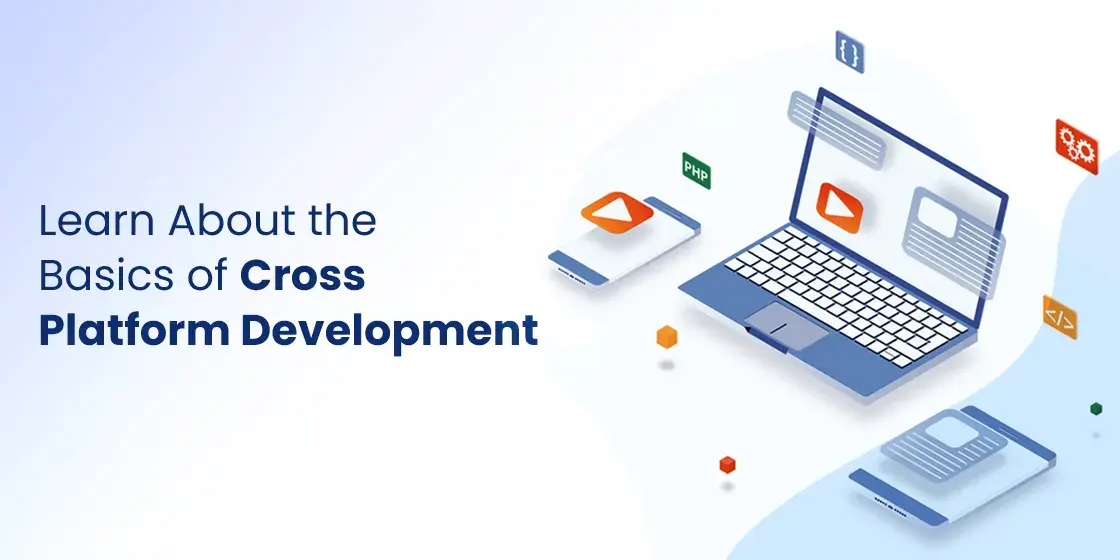Building an offshore dedicated team isn’t just about hiring developers in lower-cost regions, it’s about creating a cohesive, high-performing unit that operates as seamlessly as your in-house staff. When executed correctly, offshore teams reduce costs by 40-60% while maintaining (or exceeding) quality standards. But when done poorly, they become productivity sinkholes plagued by miscommunication and turnover.
This guide walks you through the proven framework for building offshore teams that actually perform. You’ll discover strategic hiring approaches, cultural integration tactics, and technology stack alignment strategies that Fortune 500 companies and scaling startups use to make offshore collaboration work.
Why Traditional Offshore Team Building Fails (And How to Avoid It)
Most offshore team initiatives fail within the first 12 months. The culprits? Poor vetting processes, cultural disconnect, and inadequate management structures.
Companies often treat offshore hiring like domestic hiring, same job posts, same interview processes, same onboarding. This approach ignores critical offshore-specific challenges like time zone coordination, asynchronous communication needs, and cultural work style differences.
The high-performance difference: Successful offshore teams are built with intentional frameworks that address these unique challenges from day one. They’re not just “remote teams that happen to be far away” they require distinct strategies for communication, collaboration, and performance management.
Understanding offshore software development benefits helps set realistic expectations before you begin the building process.
Phase 1: Define Your Team Structure and Requirements
Before posting a single job description, you need architectural clarity on what you’re building.
Identify Your Offshore Team Model
Three primary models exist:
- Dedicated Team: Full-time developers exclusively working on your projects (best for long-term product development)
- Staff Augmentation: Individual specialists filling skill gaps in your existing team
- Hybrid Model: Mix of core dedicated members plus flexible augmentation capacity
Most companies building high-performance teams choose the dedicated model for its stability, knowledge retention, and cultural cohesion.
Compare staff augmentation vs managed services to determine which approach fits your needs.
Map Required Skill Sets and Seniority Levels
Create a detailed team composition plan:
- Senior Developers (20-30%): Architectural decisions, code reviews, mentorship
- Mid-Level Developers (50-60%): Core feature development, implementation
- Junior Developers (10-20%): Testing, documentation, support tasks
Pro Tip: Start with 60% senior-to-mid ratio. As performance stabilizes, you can shift toward mid-level concentration to optimize costs.
Phase 2: Select the Right Offshore Partner or Region
Geographic selection dramatically impacts team performance. Time zone overlap, cultural compatibility, and talent density matter more than hourly rates.
Evaluate Regional Advantages
Eastern Europe (Ukraine, Poland, Romania):
- Strong technical education systems
- 3-5 hour time zone overlap with US East Coast
- Cultural alignment with Western business practices
Latin America (Argentina, Brazil, Mexico):
- Nearly identical time zones to US
- Growing tech ecosystems
- Ideal for nearshore software outsourcing
Asia (India, Pakistan, Philippines, Vietnam):
- Large and growing talent pools, particularly in software development and IT services
- Established outsourcing infrastructure with strong English proficiency and global delivery capabilities
- Significant cost advantages compared to Western markets (though with minimal time zone overlap)
Key Insight: For teams requiring real-time collaboration, prioritize 4+ hours of time zone overlap over pure cost savings.
Vet Offshore Partners Rigorously
If working through an offshore software development partner, evaluate:
- Technical Vetting Process: Do they conduct multi-stage technical assessments?
- Client Retention Rates: Are companies still working with them after 2+ years?
- Communication Infrastructure: What tools, processes, and protocols do they use?
- Cultural Training: Do they prepare teams for client-specific work cultures?
Request case studies from companies in your industry with similar team sizes.
Phase 3: Implement a Rigorous Hiring Process
Generic technical interviews don’t predict offshore team success. You need a multi-dimensional assessment covering technical skills, communication ability, and cultural fit.
The 5-Stage Vetting Framework
Stage 1: Technical Screening (Automated)
Use platforms like HackerRank or Codility for baseline skill verification. Filter for problem-solving ability, not just syntax knowledge.
Stage 2: Live Coding Assessment
Conduct pair programming sessions to evaluate:
- Real-time problem decomposition
- Code quality and documentation habits
- Ability to articulate technical decisions in English
Stage 3: System Design Interview (For Senior Roles)
Present real architectural challenges from your product. Assess scalability thinking and technology stack knowledge.
Stage 4: Cultural Fit and Communication Assessment
Test asynchronous communication skills:
- How do they structure written updates?
- Can they explain technical concepts to non-technical stakeholders?
- Do they ask clarifying questions or make assumptions?
Stage 5: Trial Project (1-2 weeks, paid)
Assign a real (but non-critical) task from your backlog. Evaluate code quality, documentation, responsiveness, and integration with your existing team.
Learn more about how to hire offshore developers with proven recruitment strategies.
Phase 4: Establish Performance Infrastructure
High-performance teams don’t happen by accident—they require intentional systems.
Set Up Communication Protocols
Real-Time Communication:
- Daily standup at overlapping time slot (keep under 15 minutes)
- Core collaboration hours: 4-hour window where entire team is available
- Emergency escalation protocol with response time commitments
Asynchronous Communication:
- Detailed written updates at shift end
- Video status reports for complex topics
- Documentation-first culture (nothing important happens only in calls)
Tool Stack:
- Slack/Teams: Real-time chat with organized channels
- Jira/Linear: Transparent task tracking
- Confluence/Notion: Knowledge base and documentation
- Loom: Async video explanations for complex feedback
Define Clear Success Metrics
Track both output and outcome metrics:
Output Metrics (Activity):
- Story points completed per sprint
- Code review turnaround time
- Pull request quality (initial approvals vs. revision cycles)
Outcome Metrics (Impact):
- Feature deployment frequency
- Production bug rate
- Customer satisfaction scores for delivered features
Review software development KPIs to establish your measurement framework.
Phase 5: Drive Cultural Integration and Team Cohesion
Technical skills get work done. Culture keeps teams together.
Bridge the Cultural Gap
Virtual Team Building:
- Monthly all-hands with cultural spotlights (not forced fun, genuine knowledge sharing)
- Peer recognition programs celebrating cross-timezone collaboration
- Annual in-person meetups (budget 1-2 per year for core team members)
Create Psychological Safety:
- Encourage questions without judgment
- Celebrate failure as learning (conduct blameless postmortems)
- Give offshore team members voice in architectural decisions
Pro Tip: Assign in-house “buddies” to offshore team members. One-on-one relationships accelerate cultural understanding faster than team-wide initiatives.
Understanding agile software development team structure helps create collaborative dynamics that work across borders.
Phase 6: Optimize for Long-Term Performance and Retention
Turnover destroys offshore team performance. Every departure costs 6-9 months of productivity (knowledge loss, replacement hiring, onboarding).
Retention Strategies That Work
Career Development Paths:
- Quarterly skills assessments with growth plans
- Budget for certifications and training (AWS, Azure, specialized frameworks)
- Clear promotion criteria with compensation increases
Competitive Compensation:
- Benchmark against local market rates + 15-20% premium
- Annual performance bonuses tied to team/company success
- Stock options or profit-sharing for senior team members
Meaningful Work:
- Rotate offshore developers through different product areas
- Include them in strategic planning sessions
- Give ownership of complete features, not just implementation tasks
Explore IT outsourcing services models that include retention guarantees and long-term partnership structures.
Phase 7: Scale Strategically with AI and Automation
Modern offshore teams leverage AI to amplify productivity without proportionally increasing headcount.
AI-Powered Development Tools
Integrate tools that offshore teams can use to accelerate delivery:
- GitHub Copilot: Reduces boilerplate coding time by 30-40%
- Automated Testing Frameworks: Ensures quality without manual QA bottlenecks
- CI/CD Pipelines: Enables faster, safer deployments
Discover how AI offshore software development teams use modern tooling to deliver enterprise-grade results.
Monitor Performance Without Micromanagement
Use data to identify issues early:
- Velocity trends: Is sprint performance declining?
- Code quality metrics: Are defect rates increasing?
- Communication patterns: Are offshore members engaging or withdrawing?
Key Insight: The best-performing offshore teams operate with autonomy, not surveillance. Focus on outcomes, not activity tracking.
Common Pitfalls and How to Avoid Them
Even with a solid framework, watch for these failure patterns:
Pitfall 1: Treating Offshore Teams as “Second-Class” Members
Solution: Invite offshore developers to all planning meetings, give them direct customer access when appropriate, and celebrate their wins publicly.
Pitfall 2: Over-Reliance on Documentation Without Dialogue
Solution: Balance written documentation with regular video calls. Complex decisions need synchronous discussion.
Pitfall 3: No Clear Escalation Process for Blockers
Solution: Define explicit escalation paths. Offshore developers should never be “stuck” for more than 4 hours waiting for answers.
Review risks of outsourcing to prepare mitigation strategies before issues emerge.
Projects With Full Trust
Want to outsource your software project to a reliable team? Get in touch with us today and build quality apps without any worry.
Outsource Project NowConclusion: From Offshore Team to High-Performance Powerhouse
Building a high-performance offshore dedicated team requires more than hiring skilled developers—it demands intentional structure, cultural investment, and continuous optimization.
The framework outlined here—from strategic team design through AI-enabled scaling—gives you a proven roadmap. Companies following this approach see 30-50% faster time-to-market, 40-60% cost savings, and retention rates exceeding 90% after the first year.
Your next steps:
- Define your team model and skill requirements (Phase 1)
- Research and shortlist offshore partners/regions (Phase 2)
- Design your multi-stage vetting process (Phase 3)
- Set up performance infrastructure before hiring (Phase 4)
Remember: High-performance offshore teams aren’t built overnight. Invest in the foundation, and you’ll create a competitive advantage that compounds over years.
Ready to explore managed team-building support? Learn about software development outsourcing models that accelerate your path to offshore success.
Empower your digital initiatives with BariTechSol, a premier custom software development company. Our skilled team tailors cutting-edge solutions to your unique needs. Elevate your tech experience and stay ahead in the digital realm. Partner with BaritechSol and code the success of your next big idea.


